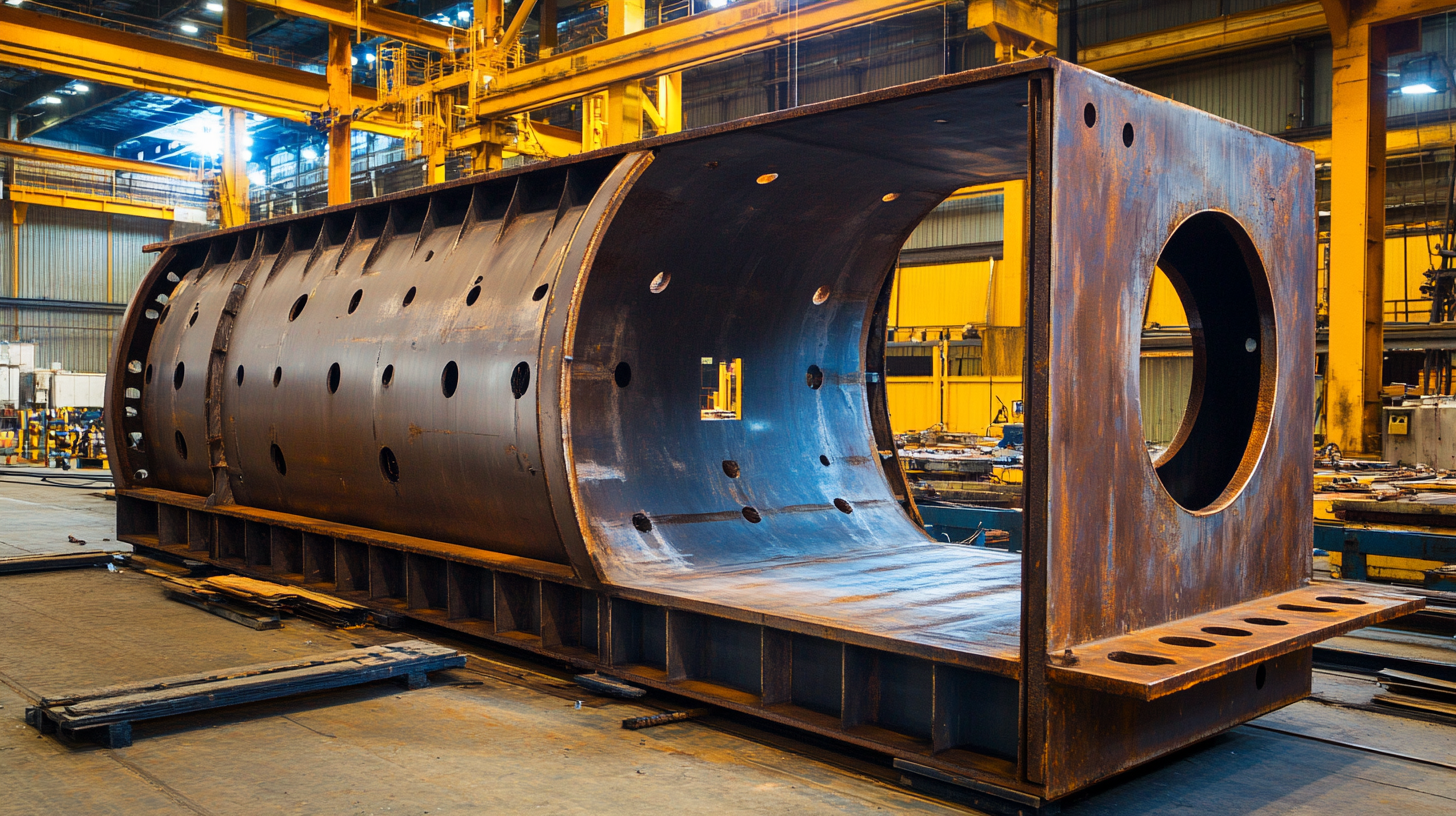In the realm of modern fabrication, Smaw Arc Welding stands out as a versatile and widely-utilized technique. Short for Shielded Metal Arc Welding, Smaw Arc Welding plays a critical role in various industries, from construction and manufacturing to repair and maintenance. Its reliability and effectiveness in joining different metals make it an ideal choice for projects requiring durability and strength. As technology advances and industries evolve, understanding the applications and challenges associated with Smaw Arc Welding becomes increasingly vital for professionals in the field.
However, despite its advantages, the Smaw Arc Welding industry faces numerous challenges that can impact productivity and quality. Issues such as skill shortages, safety concerns, and the need for continual advancements in welding technology present significant hurdles. Moreover, as environmental regulations tighten, welders must adapt to more sustainable practices while maintaining the high standards of performance that Smaw Arc Welding is known for. This blog aims to explore the multifaceted applications of Smaw Arc Welding, along with the contemporary challenges that industry professionals must navigate to ensure the continued advancement and success of this essential welding method.

SMAW (Shielded Metal Arc Welding) has carved a significant niche in various industries due to its unique advantages. One of the key benefits of SMAW is its versatility; it can be employed in diverse settings, from heavy industrial applications to delicate repairs. This adaptability makes it essential in sectors like construction, automotive, and even shipbuilding, where robust, high-quality welds are imperative. The ability to work in various environments, including outdoor and challenging conditions, furthers its appeal among manufacturers looking for reliable welding solutions. Another prominent advantage of SMAW is the accessibility and low cost of equipment. Unlike other welding processes that require more extensive setup and expensive machinery, SMAW utilizes straightforward tools that are widely available. This affordability allows smaller enterprises to incorporate welding capabilities without the substantial investment that other welding technologies demand. Moreover, the learning curve associated with SMAW is typically shorter, enabling workers to become proficient quickly, which is especially vital in industries facing a skills gap as emphasized in recent reports. Furthermore, the robust quality of welds produced through SMAW contributes to its ongoing popularity. The process creates strong joints that can withstand various stresses, making it ideal for applications requiring durability and resilience. With the increasing focus on quality in modern fabrication and the need for sustainable practices, SMAW continues to hold its ground in competitive industries. This resilience, coupled with advancements in related technologies, positions SMAW as a vital player in the evolving landscape of manufacturing.

Shielded Metal Arc Welding (SMAW), also known as stick welding, is a versatile welding technique widely used across various industries. One of its most notable applications is in construction, where the ability to weld in outdoor environments and in cramped spaces makes it an ideal choice for steel structures. Large beams and columns are often fabricated using SMAW, providing the robust connections needed for safety and stability. Additionally, SMAW’s effectiveness in joining different types of metals allows for flexible design and construction approaches, catering to the unique requirements of each project.
Another significant application of SMAW is in the manufacturing sector, particularly in the production of heavy machinery and equipment. The technique enables manufacturers to weld large components with exceptional strength, which is crucial in industries such as mining, agriculture, and transportation. The portability of SMAW equipment, along with its ability to produce high-quality welds, allows for in-field repairs and maintenance, minimizing downtime and enhancing productivity across operations.
SMAW also plays a critical role in the shipbuilding industry, where its adaptability in welding thick and thin materials is indispensable. Ship hulls and other critical components require durable joints that can withstand harsh marine environments. The skillful application of SMAW ensures that ships can be constructed with integrity and resilience. Overall, SMAW arc welding remains an essential technique in modern fabrication, meeting the diverse demands of various industries while continually evolving to address emerging challenges.

SMAW (Shielded Metal Arc Welding) is a widely used welding technique, primarily known for its versatility and effectiveness in various industrial applications. However, despite its strengths, SMAW faces multiple challenges in modern fabrication that can impact efficiency and quality. One significant challenge is the need for skilled labor. As the workforce ages and fewer young professionals enter the trades, finding workers proficient in SMAW becomes increasingly difficult, leading to delayed projects and potential quality issues.
Another obstacle is the evolving technological landscape. As manufacturers integrate advanced machinery and automation into their processes, traditional methods like SMAW may struggle to keep pace. The manual nature of SMAW requires operators to be attentive and skilled, which can be at odds with the industry's shift toward automation and robotic welding systems that offer speed and precision. Furthermore, the safety risks associated with SMAW, such as exposure to electric shock and hazardous fumes, necessitate rigorous training and modern safety protocols that can be resource-intensive for businesses.
Lastly, environmental regulations are tightening, impacting the materials and processes used in welding. SMAW generates significant smoke and fumes, which can pose challenges in meeting new standards for emissions and worker safety. This requires companies to invest in better ventilation systems and protective gear, adding further complexity and cost to the welding process. Thus, while SMAW remains a critical player in fabrication, addressing these challenges will be essential for sustaining its relevance in an increasingly competitive and regulated industry.

In recent years, the Shielded Metal Arc Welding (SMAW) industry has undergone significant transformations driven by innovations and technological advances. These advancements, highlighted in the report "Advancement in Welding Technology and Materials: Improving Productivity," illustrate how modern techniques are reshaping welding practices and enhancing productivity across various sectors. Notably, the introduction of advanced electrode formulations and improved power sources has allowed for greater versatility and efficiency in SMAW applications, reducing downtime and increasing throughput.
One key innovation is the development of high-performance electrodes that maximize arc stability and minimize spatter, leading to a cleaner welding process. According to industry data, the adoption of these advanced electrodes has been linked to a productivity increase of up to 30% in specific applications, such as construction and heavy manufacturing. Moreover, state-of-the-art inverter technology is enabling welders to achieve better control over the welding process, facilitating precision work even in challenging conditions.
In addition to these technical enhancements, the sector is witnessing a shift towards smarter welding solutions. The integration of IoT and data analytics into welding operations is proving to be a game-changer. Real-time monitoring systems help in identifying inefficiencies and predicting maintenance needs, thereby reducing operational costs and downtime. Reports indicate that companies leveraging these smart solutions can experience a 20% reduction in overall welding costs, underscoring the importance of embracing technology in modern fabrication practices.
The Submerged Arc Welding (SMAW) industry is witnessing a significant transformation as it adapts to modern fabrication demands. As the global welding market is projected to grow from $24.73 billion in 2023 to $34.18 billion by 2030, SMAW applications are expanding across various sectors, including automotive, construction, and aerospace. This growing trend is fueled by the need for high-quality welds that can withstand demanding environments.
Future predictions indicate that advancements in welding technologies will play a critical role in shaping the SMAW landscape. The global arc welding equipment market is expected to register a compound annual growth rate of approximately 6% through 2029. With increased automation and the integration of smart technologies, manufacturers are aiming to enhance productivity and efficiency in welding processes.
Moreover, the U.S. welding consumables market, projected to grow from $2.50 billion in 2022 to $3.31 billion by 2029, highlights the rising demand for high-performance welding materials. This shift is indicative of a larger trend in industrial production where quality and sustainability are paramount. As the SMAW industry evolves, embracing these innovations will be essential to meet future challenges and remain competitive in a rapidly changing market.
